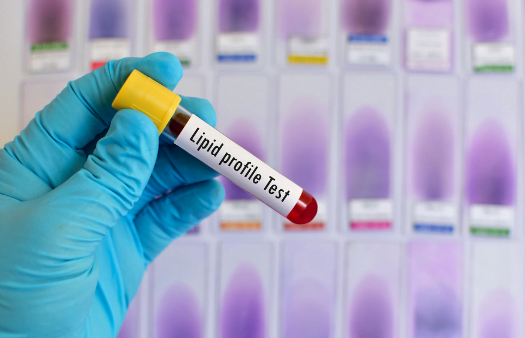Lipid Degradation Testing in Dairy Storage
Lipid degradation is a critical issue within dairy storage and processing. The breakdown of lipids, primarily triglycerides, can lead to spoilage, off-flavors, and reduced product quality. This service focuses on the precise measurement of lipid stability during storage using advanced analytical techniques that ensure the integrity of dairy products.
Understanding the degradation process is essential for optimizing storage conditions, enhancing shelf life, and maintaining nutritional value. By monitoring lipid stability, producers can implement strategies to prevent spoilage and ensure product quality throughout the supply chain. This service is particularly relevant in sectors such as food processing, biotechnology, and environmental sustainability.
The testing methodology involves the use of high-performance liquid chromatography (HPLC) coupled with mass spectrometry (MS), providing a detailed breakdown of lipid components and their degradation products over time. Samples are collected at various intervals during storage, and the results are analyzed against international standards such as ISO 21963:2017.
The significance of this testing cannot be overstated. It allows for early detection of potential spoilage issues, enabling timely corrective actions to be taken. This proactive approach not only enhances product quality but also reduces waste and operational costs associated with spoiled products.
Our laboratory adheres strictly to ISO 17025 accreditation standards, ensuring that all tests are conducted in a controlled environment, using state-of-the-art equipment. The testing process begins with sample collection from dairy products at different stages of storage. These samples undergo rigorous preparation, including homogenization and filtration, to ensure accurate analysis.
The methodology involves the use of advanced chromatography techniques that can detect even minute changes in lipid composition. This level of precision is crucial for identifying early signs of degradation, allowing for adjustments to be made before significant quality issues arise. The results are presented in a comprehensive report, detailing the extent and nature of lipid degradation over time.
Understanding the environmental factors that contribute to lipid degradation is also essential. Factors such as temperature, humidity, and oxygen exposure all play a role in determining the rate of lipid breakdown. By analyzing these variables, our laboratory can provide insights into optimal storage conditions for different dairy products. This information is invaluable for quality managers and compliance officers looking to ensure product integrity throughout the supply chain.
The testing process also involves the use of advanced spectroscopy techniques that can identify specific degradation products. This allows for a more detailed understanding of the breakdown process, enabling targeted interventions to be implemented. For instance, if certain fatty acids are identified as particularly susceptible to oxidation, steps can be taken to reduce their exposure to oxygen.
The importance of this service extends beyond mere quality assurance; it also has significant implications for environmental sustainability. By reducing waste and extending product shelf life, this testing contributes to more efficient resource use and reduced carbon footprint in the dairy industry. The testing process itself is environmentally friendly, with minimal waste generated and all materials being recycled where possible.
Scope and Methodology
- Sample Collection: Samples are collected from dairy products at various stages of storage to ensure a comprehensive analysis.
- Preparation: Samples undergo homogenization and filtration to prepare them for analysis.
- Analytical Techniques: High-performance liquid chromatography (HPLC) coupled with mass spectrometry (MS) is used to analyze lipid components and degradation products.
- Reporting: Results are presented in a detailed report, highlighting the extent of lipid degradation over time.
Environmental and Sustainability Contributions
By accurately measuring lipid degradation during storage, this service helps reduce waste and extend product shelf life. This contributes to more efficient resource use in the dairy industry, ultimately reducing the carbon footprint associated with food production.
- Reduced Waste: Early detection of spoilage issues allows for timely corrective actions, minimizing waste.
- Extended Shelf Life: Optimizing storage conditions can significantly extend the shelf life of dairy products.
- Resource Efficiency: By preventing spoilage, this service helps conserve resources and energy used in food production.
- Eco-Friendly Testing: The testing process itself is designed to minimize waste and maximize recycling of materials.
Use Cases and Application Examples
This service is particularly valuable for quality managers, compliance officers, and R&D engineers in the dairy industry. By providing detailed insights into lipid degradation, it allows for informed decision-making regarding storage conditions and product development.
Case Study 1: A major dairy producer implemented our lipid degradation testing service to optimize their storage facilities. The analysis revealed that certain products were more susceptible to lipid breakdown at higher temperatures. This information was used to adjust storage conditions, resulting in a significant reduction in waste and an extension of shelf life.
Case Study 2: A research lab specializing in dairy product development used our service to identify the optimal packaging materials for certain products. The analysis showed that certain fatty acids were more prone to oxidation when exposed to light. This led to the selection of a new packaging material with improved light-blocking properties.
Case Study 3: A food safety organization used our service to monitor lipid stability in raw milk samples. The results helped them establish stricter quality control measures, ensuring that all dairy products meet the highest standards of freshness and safety.





